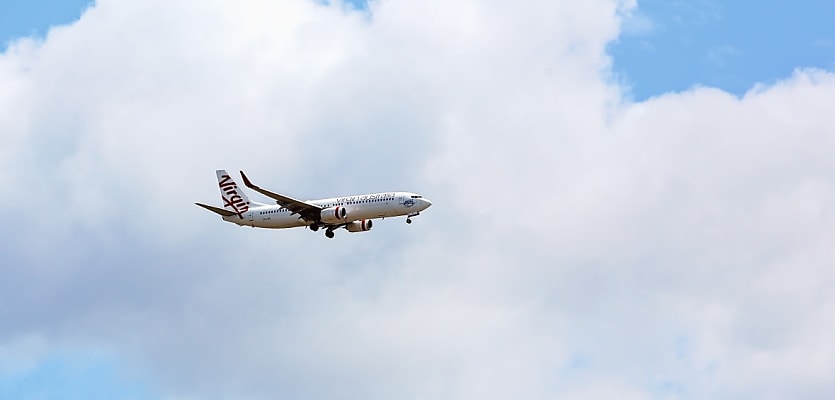Foreign buyers are back in force with activity climbing 27 per cent, according to the latest data.
The Treasury has released its latest report chronicling the activity of non-resident property purchasers across Australia in FY2022–23.
Along with a marked increase in buying, several other key factors jumped out, indicating that behaviours around foreign buying are certainly in a state of flux – as is expected to continue, as new foreign buyer fees come into play.
Foreign activity rises
The first substantial change between FY2021–22 was in buyer activity. With COVID-19 having severely dampened travel to and from Australia for several years, those who had eyed property in Australia clearly put their plans off until restrictions eased.
According to the Treasury, from 1 July 2022 to 30 June 2023 there were 5,360 residential real estate purchases with a level of foreign ownership. The total value of these transactions was $4.9 billion. This is up from 4,228 in 2021–22 with a total value of $3.9 billion, representing a 27 per cent increase year-over-year.
Queensland comes out strong
Victoria was once again the strongest state for foreign buying, with 2,240 of the overall transactions in FY22–23 occurring in the state. Queensland, however, was shown to be the dark horse, with the state racing ahead in transaction volumes over the past year.
While Queensland came in second in FY21–22, the margin between the Sunshine State and third-place NSW was slim. Queensland had 956 sales compared to NSW’s 664 during the period. In the most recent reporting year, NSW stayed stagnant with 656 sales while Queensland upped its total to 1,121.
Buyer profile evolves
Properties with values under $1 million made up a larger share of purchases in FY22–23, with the average sale price sitting at $914,000. Overall, 79.8 per cent of sale transactions in 2022–23 were under $1 million, compared to 76.5 per cent in FY21–22.
While the conventional idea of a foreign buyer might be high-flying multimillionaires targeting premium property, Daniel Ho, group managing director and co-founder of international property portal Juwai IQI, noted that the reality depicts quite a different reality.
“Foreign buyers paid an average price of $914,000, which is just below the overall average price across the country of $959,300 in the March quarter, according to the Australian Bureau of Statistics,” he explained.
Prime property concentrates in two states
One-fifth, or 1,169, of all the buyers were buyers purchasing property worth at least $1 million. And while NSW only captured the bronze medal for overall foreign investment, it leapfrogged over second-place Queensland in relation to higher-value property purchases.
NSW recorded 284 transactions over $1 million, or 43.2 per cent of its overall sales for the year. Queensland, meanwhile, saw 200 sales exceed the $1 million price point, or 17.8 per cent of its foreign investment volume.
But in this category, again no state came close to Victoria’s total, with the state reporting 569 foreign buyer transactions in FY22–23 worth over $1 million each.
Buying far outstrips selling
Over the 12 months of the most recent reporting year, foreign buyer purchases far exceeded sales, with just 1,119 homes sold for a total of $1 billion.
This definition also includes when a foreign buyer becomes a permanent resident or citizen, even if they did not sell their property. Of the 5,360 purchase transactions in 2022–23, 164 registrants became a permanent resident or gained Australian citizenship, so the true value of foreign-owned property that was put on the market during the year was even lower.
It appears that once overseas residents have bought in Australia, they hold their purchases tightly.
Ho noted that Australia’s strong investment fundamentals go a long way in countering the detractors from buying property in the country – namely the taxes and fees associated with doing so.
“This report encompasses buyers from all over the world, including all parts of Asia, North America, South Africa, and the UK and Europe. Such a wide population has varying motivations, but they all have some things in common. They appreciate Australia’s strong economy, good education system and attractive lifestyle,” he commented.
“In many cases, these buyers paid 7 per cent or 8 per cent of the purchase price on stamp duty and tens of thousands of dollars, or more, on foreign buyer application fees. And once they own their property, at least until they become permanent residents or citizens, they will pay an additional land tax every year,” Ho added.
He noted that while similar buying trends have been observed in the US, Canada, Europe and the UK, Australia’s future as it relates to foreign investment relies on a number of new and potential policies currently up for discussion.
On top of foreign buyer fees increasing on a federal level and within some states, the country’s handling of international students will have an impact on overseas investment.
“If the Australian government succeeds in reducing the number of foreign students and other migrants coming to the country, we can expect foreign buying to be affected,” Ho said.
ABOUT THE AUTHOR
Juliet Helmke
Based in Sydney, Juliet Helmke has a broad range of reporting and editorial experience across the areas of business, technology, entertainment and the arts. She was formerly Senior Editor at The New York Observer.









You are not authorised to post comments.
Comments will undergo moderation before they get published.